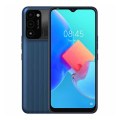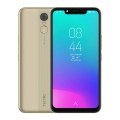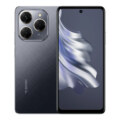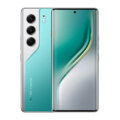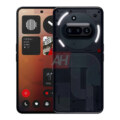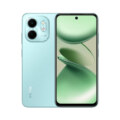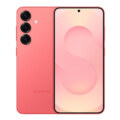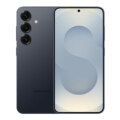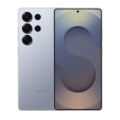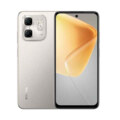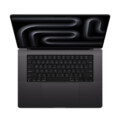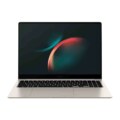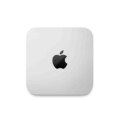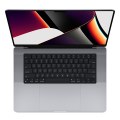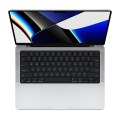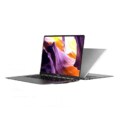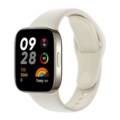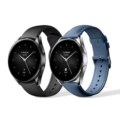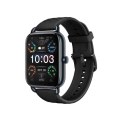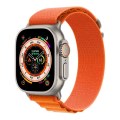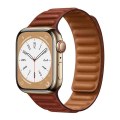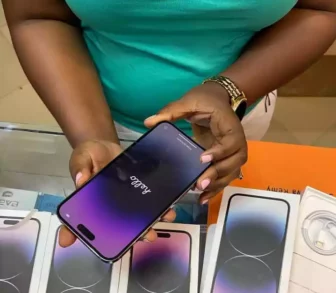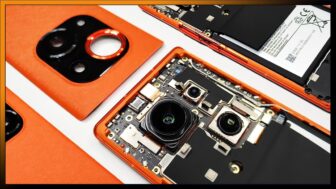- Bidhaa Mpya
- Tecno
- Tecno Pop 2 Plus
Tecno Pop 2 Plus
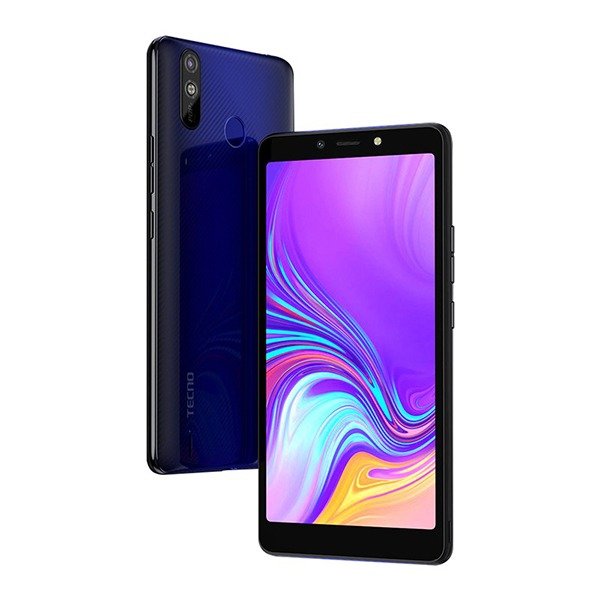

-
CPU: Quad-core 1.3 GHz Cortex-A7
-
RAM: 1 GB
-
Storage: 16 GB
-
Display: IPS LCD, 6.0 inches
-
Camera: 5 MP
-
OS: Android 8.1 Oreo (Go edition)
Tecno Pop 2 Plus is among the top cheapest smartphones from Tecno. The phone comes with IPS LCD, 6.0 inches display with a resolution up to 480 x 960 pixels.
Tecno Pop 2 Plus comes with a single camera on the back and front, the main camera comes with 5-megapixel while the selfie camera comes with 8-megapixel. Both cameras take video up to 1080p@30fps.
The phone is powered by Mediatek MT6580P chipset with CPU power up to Quad-core 1.3 GHz Cortex-A7. The CPU is boosted by RAM up to 1 GB. You can get your hands on Pop 2 Plus with 16 GB internal storage with support of memory card up to 32 GB.
Bei ya Tecno Pop 2 Plus in Tanzania?
Tecno Pop 2 Plus is estimated to be sold in Tanzania starting at TZS 180,000 to 120,000. Price may vary in different markets.
Disclaimer. We can not guarantee that the information on this page is 100% correct. Read more
Tecno Pop 2 Plus Sifa Kamili
General
-
Device TypeBar
-
ModelPop 2 Plus
-
Announced2019, June
-
Released2019, May
-
StatusAvailable
Design
-
Type Design Type called form factor refers to a mobile phone's size, shape, and style as well as the layout and position of major components of phone. There are three major form factors seen in mobile phones => bar phones, folding phones and sliding phones.Bar
-
Dimensions161.7 x 78.9 x 9.6 mm (6.37 x 3.11 x 0.38 in)
-
Weight205 g (7.23 oz)
-
ColorsMidnight Black, Champagne Gold, Nebula Black
Network
-
2G NetworkGSM 900 / 1800 - SIM 1 & SIM 2
-
3G NetworkHSDPA 900 / 2100
-
SIM SIM (Subscriber Identity Module) is a small card that contains mobile network subscriber's account information. This allows the phone using the card to attach to a mobile network. The SIM card is most commonly associated with GSM and UMTS mobile networks. Moving a SIM card from one phone to another allows a subscriber to switch mobile phones without having to contact their mobile network carrier. SIM cards can also be used by a phone to store limited amounts of data, such as phone numbers and text messages.Micro SIM
-
Dual SIMYes
Display
-
Display Type Display Technology => A number of display technologies and types used in mobile phones => TFT (Thin Film Transistor), IPS (In-Place Switching), OLED (Organic Light Emitting Diode), AMOLED (Active-Matrix Organic Light-Emitting Diode), Super AMOLED (an even advanced version of AMOLED), Resistive Touchscreen (Resistive touchscreens contain two layer of conductive material with a very small gap between them which acts as a resistance), Capacitive Touchsceen (Capacitive touchscreen technology consists of a layer of glass coated with a transparent conductor)IPS LCD
-
Size6.0 inches, 92.9 cm2 (~72.8% screen-to-body ratio)
-
Resolution480 x 960 pixels
-
Display Colors Display Colors is refers to the number of different shades of colors that the screen is capable of displaying => 64K colors, 256K colors and 16 million colors, Obviously 16M is highest available range of colors and better than others.16M colors
-
Pixel Density Pixel Density (PPI) is refers to the concentration of pixels on a particular display, measured in pixels per inch (ppi). Pixel density is calculated by dividing the diagonal pixel resolution of a display by its diagonal size, higher pixel density better display quality.179 ppi density
-
Touch ScreenCapacitive Touchscreen
Media
-
FM RadioYes
-
Earphone JackYes
Camera
-
Camera Set The total number of lenses contained within the Rear or Main camera systems. Referred to as Single, Dual or Triple.Single Camera
-
Main Camera Camera is able to capture photographs and usually videos, The most important characteristics of a camera are the resolution (measured in megapixels), lens focus type (fixed or automatic), higher megapixel cameras are known to capture higher quality photos, but not always a good measurement of the photos quality.5 MP, AF
-
Camera Video1080p@30fps
-
FeaturesHDR
-
Flash Flash Light => There is commonly two types of flash lights are used in camera mobile phones, LED Flash (LED flash offers lower power consumption with drive circuitry that takes up very little room, LEDs can be strobed faster than any other light source), Xenon Flash (xenon flash produces an extremely intense full-spectrum white light for a very short duration)Dual LED Flash
-
Selfie Set The total number of lenses contained within the Selfie camera systems. Referred to as Single, Dual or Triple.Single Camera
-
Selfie Camera8 MP
-
Selfie Video1080p@30fps
-
FeaturesLED flash
Software
-
OS OS => Every computer system run on a base software called Operating System (OS). Operating System controls all basic operations of the computer (such as smartphone, PDAs, tablet computers and other handheld devices). The Operating System allows the user to install and run third party applications (apps), apps are used to add new functionality to the device.Android 8.1 Oreo (Go edition)
-
User Interface UI or user interface of a device is the look and feel of the on-screen menu system. How it works, its color scheme, how it responds to button presses, all of these things are part of the user interface.HiOS
Hardware
-
Chipset Chipset is a group of integrated circuits designed to perform one or a more dedicated functions, often with real time computing constraints, Popular smartphones are equipped with more advanced embedded chipsets that can do many different tasks depending on their programming.Mediatek MT6580P
-
CPU CPU (Central Processing Unit) mostly known as processors, CPU processes instructions in order to carry out certain functions that make your device operate properly. Processors are often described as the brain of computers, smartphones and tablets, Smartphones and tablets rely on processors to carry out their every task, Processors are an incredibly important factor in selecting any type of computing device, including your smartphone.Quad-core 1.3 GHz Cortex-A7
-
GPU GPU (Graphics Processing Unit) is a single-chip processor designed to rapidly manipulate and alter memory to accelerate the creation of images in a frame buffer intended for output to a display, This includes things such as lighting effects, object transformations, and 3D motion.Mali-400MP2
-
RAM RAM (Random Access Memory) is a type of computer memory that can be accessed randomly, any byte of memory can be accessed without touching the preceding bytes that allows information to be stored and accessed quickly from random locations. RAM is the most common type of memory found in computer systems, smartphones, tablets and other electronic devices.1 GB
-
Internal Storage Internal Storage is a data storage space (flash memory) mostly used in smartphones, tablets and other electronic devices where operating system, apps, music, photos, videos, files and other user data Is stored.16 GB
-
Card Slot Memory Card Slot is a special slot for inserting a memory card. Memory cards allow you to expand the phone's built-in memory, A memory card (sometimes called a flash memory card or a storage card) is a small storage medium used to store data such as text, pictures, audio, and video, for use on small, portable or remote computing devices such as mobile phones, mp3 players, digital cameras.Yes microSD, up to 32 GB
-
Sensors Sensors are electronic components that detects and responds to some type of input from the physical environment. The specific input could be light, heat, motion, moisture, pressure and location, The output is generally a signal that is converted to use in computing systems, a location sensor, such as a GPS receiver is able to detect current location of your electronic device.Fingerprint (rear-mounted), accelerometer, proximity
Connectivity
-
Bluetooth Bluetooth is a wireless communications technology for exchanging data between mobile phones, headsets, computers and other network devices over short distances without wires, Bluetooth technology was primarily designed to support simple wireless networking of personal consumer devices.4.2, A2DP, LE
-
Wi-fi Wi-Fi is a popular wireless networking technology using radio waves to provide high-speed network connections that allows devices to communicate without cords or cables, Wi-Fi is increasingly becoming the preferred mode of internet connectivity all over the world.Wi-Fi 802.11 b/g/n
-
Wi-fi Hotspot Wi-fi Hotspot is a mobile feature allows your phone to share its cellular data connection by creating a Wi-Fi network.
-
USBmicroUSB 2.0
-
GPS GPS The Global Positioning System is a satellite-based radio navigation system, GPS permits users to determine their position, velocity and the time 24 hours a day, in all weather, anywhere in the world, In order to locate your position, your device or GPS receiver must have a clear view of the sky.Yes, with A-GPS
-
NFC NFC (Near field communication) is a set of standards for smartphones and similar devices to establish peer-to-peer radio communications with each other by touching them together or bringing them into proximity, usually no more than a few inches.
Data
-
GPRS GPRS (General Packet Radio Service) is a packet oriented mobile data service on the 2G and 3G cellular communication system's global system for mobile communications (GSM), Generally, GPRS is used for the purpose of wireless data transfer, such as sharing pictures and videos or browsing the Internet via a mobile phone connection.
-
EDGE EDGE (Enhanced Data GSM Environment) is a wireless network technology generally considered the next step in the 2G network offers data transfer rates up to four times faster than ordinary GSM networks, Generally, EDGE is used for the purpose of wireless data transfer, such as sharing pictures and videos or browsing the Internet via a mobile phone connection.
-
SpeedHSPA 21.1/5.76 Mbps, LTE Cat4 150/50 Mbps
Battery
-
Battery Type Battery Type => Cell phones run on various kinds of batteries depending on the manufacturer, phone size or shape and features. There are basically four types of cell phone batteries => Lithium Polymer, Lithium Ion, Nickel Metal Hydride and Nickel Cadmium.Li-Poly (Lithium Polymer)
-
Capacity Battery Capacity is a measure (typically in Amp-hr) of the charge stored by the battery, and is determined by the mass of active material contained in the battery. The battery capacity represents the maximum amount of energy that can be extracted from the battery under certain conditions.5000 mAh
-
PlacementNon-removable
-
Standby Standby Time is the total amount of time that you can leave your is fully charged, turned on and ready to send and receive calls or data transmissions before completely discharging the battery.92h
-
Talk Time Talk Time is the longest time that a single battery charge will last when you are constantly talking on the phone under perfect conditions, Ambient temperature and highly dependent on the cellular network environment such as the distance to the closest cell network tower.24:46h
-
Music Play19:33h
Looking to buy the Tecno Pop 2 Plus in Tanzania? Purchase it at the best price on the Zoom Tanzania Marketplace. If you have a Tecno Pop 2 Plus to sell, list it with us to reach buyers across Tanzania. Click below to buy or sell your Tecno Pop 2 Plus today. Visit Zoom Tanzania
